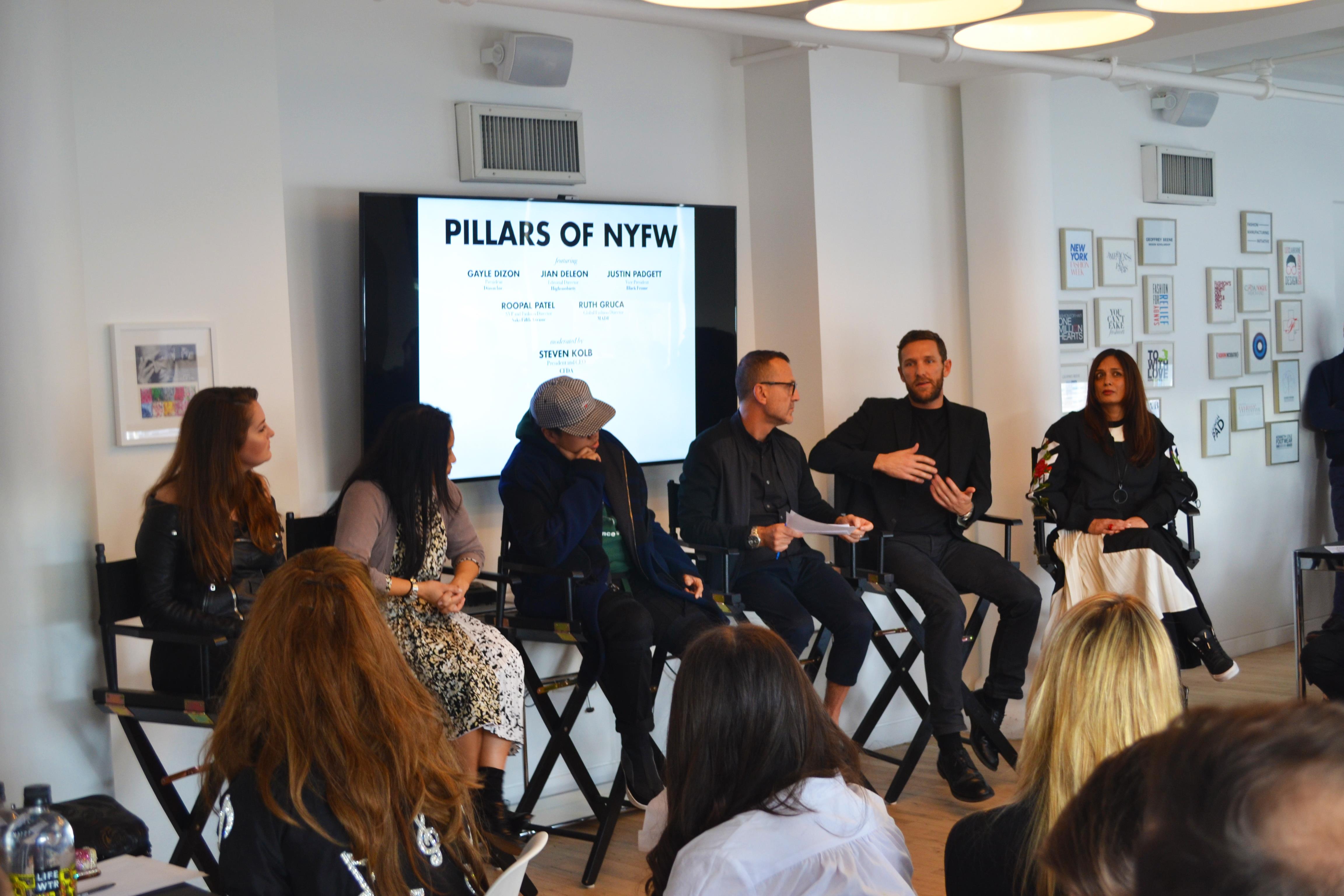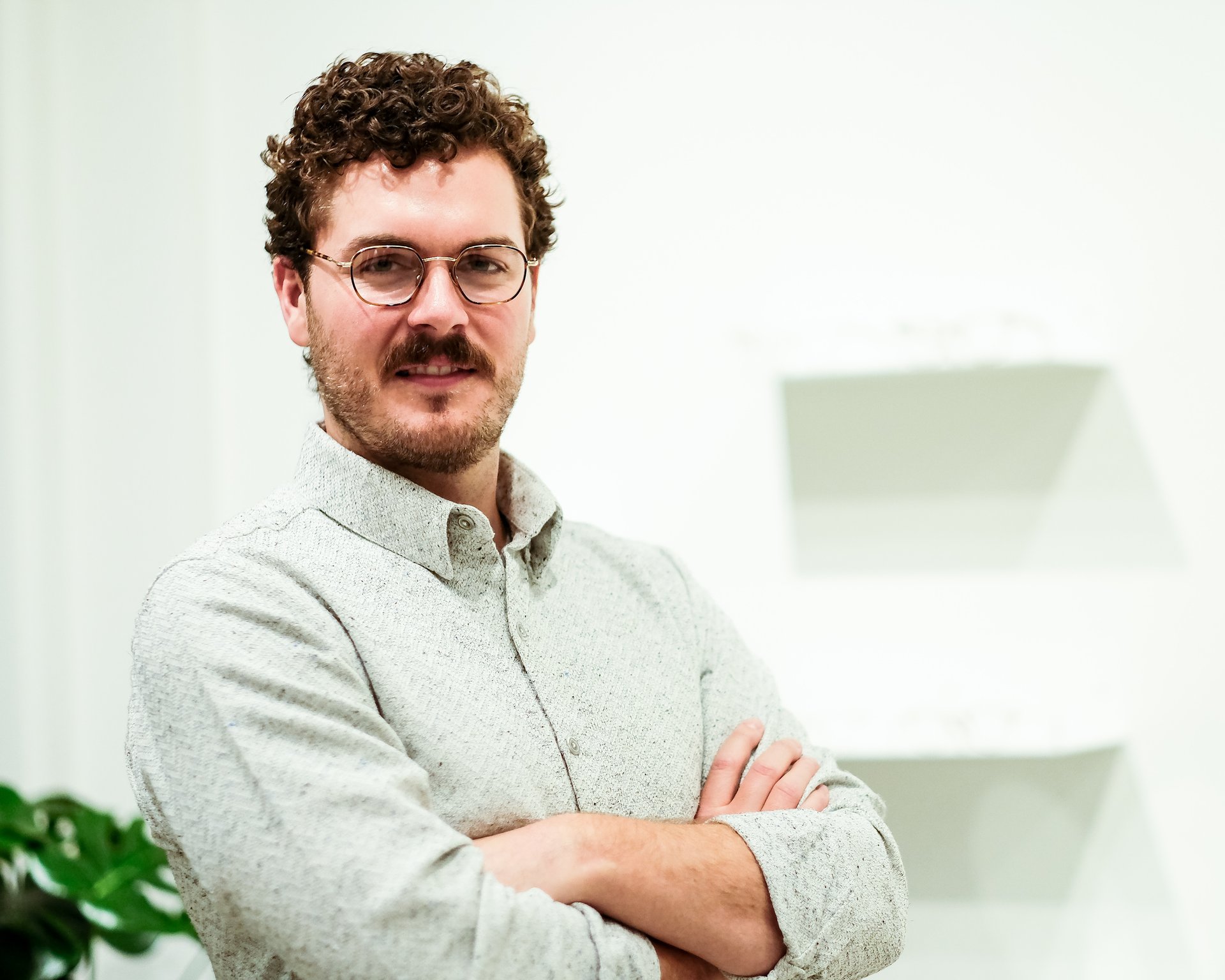Taking A nxtstp Towards Fashion’s Future
November 13, 2017
Aldo Araujo


“You’re all probably wondering what nxtstp is,” said CFDA President and CEO Steven Kolb. “It’s a program born and designed to serve you, the emerging designers, within the context of New York Fashion Week.”
Kolb was speaking at CFDA’s headquarters last Wednesday, where he kicked off the first iteration of nxstp. The one-day event was born out of an industry need to foster, protect and empower emerging American talent and championed by Senior Associate of Fashion Week Joseph Maglieri.
Maglieri said that the mission of nxtstp is to prepare designers with the insight and resources to decide what is best for their brand’s business in the evolving landscape of New York Fashion Week.
“The CFDA recognizes the pivotal role emerging designers have in fashion, culture, and commerce, so we expand our responsibility and contribution back to the designers through nxtstp,” he noted.
This dynamic space was created for fashion’s new guard for with day-long dialogue and mentorship, involving 21 different industry leaders across retail, editorial, communications, events and design.
The inaugural edition featured thought-provoking talks with 38 emerging designers in attendance, among them Matthew Adams Dolan, Maria Kazakova of Jahnkoy, Greg Rosborough and Abdul Abasi of Abasi Rosborough, Raffaella Hanley of Lou Dallas, Emily Adams Bode of Bode.
Before kicking off the first panel, Kolb welcomed the designers and shared his excitement for the day’s programming.
“There is something unique about American fashion because it’s an industry that supports itself,” Kolb said. “Our chairwoman Diane Von Furstenberg likes to call us family… because the stronger each of you are as individual designers, the stronger the industry.”
Here, a look at the day’s highlights.
Pillars of NYFW
The morning session, Pillars of New York Fashion Week, zeroed in on the role and home of emerging talent in the crowded New York market.
“You can’t find emerging talent elsewhere in the world like you do in New York,” said Roopal Patel, senior vice president and fashion director of Saks Fifth Avenue. “If you’re looking to incubate a brand and support emerging talent, New York is the place to go.”
New York hosts the largest amount of runway shows and presentation of the fashion capitals, and for many brands, knowing how, when, and where to show their collection is key.
Gayle Dizon, president of Dizon, Inc., who works with an impressive roster of designers on their shows, expressed the importance of knowing what’s right for your brand and honing in on the authentic message behind a collection.
“I don’t think everybody needs to do a runway show,” she said. “Decide what format works best for your business – it’s different for every designer.”
There are many ways to participate in the week than a formal showing of a collection.
“There’s so much more happening off the runway,” said Jian DeLeon, editorial director of Highsnobiety. “Whether it’s Nike dropping an anticipated collaboration with Virgil Abloh, or an in-store event to attract consumers to buy a product, find what’s realistic and affordable for you.”
And, added Black Frame Vice President Justin Padgett, “Own the piece that defines you, and listen to what your consumers want. Repeat your key message to the media, and drill it in.”
Ruth Gruca, global fashion director of MADE, pointed to challenges designers expressed about securing sponsorship for their shows.
“The most successful people in the industry hear ‘no’ and turn either left, right, or find a way around it, but will never walk away and close the door,” Gruca said. “The brands that are most successful are those who know who they are.”
Strategy: Events & Branding
Before the Internet, fashion week was solely for traditional press and retailers. Now, access to the runways is just a click away.
The advent of digital media has shifted the role of communications and forced it to evolve and adapt to the ever-changing landscape. 3.1 Phillip Lim Press Director Katy Russ said public relations continues to serve as the layer of protection between the media and designer. “Think local citizen, global world,” she said. “That’s the power of social media, and it’s our job to leverage it.”
Purple PR Account Director Jocelyn Mak described her role as a way to help brands cultivate and strengthen their identity through the art of story-telling.
“People will ask you: where do you want to be, and where do you see your brand growing?” said Mak. “Only you have the real, honest answer to that.”
The off-season between fashion weeks is a pivotal time to create relationships with the press and target the editors you want at your next show.
“Part of the designer’s job is networking. Put yourself out there and ask to meet different editors that you want to target and that you want at your show,” Mak said. “Use social media for the hype and let people know what’s coming through the art of story-telling.”
Modes of Marketplace
The traditional retail model is in a state of flux, leaving designers at the start of their businesses challenged to come up with an effective sales strategy.
According to Jonathan Simkhai President April Hennig, a designer should focus more on aligning with the right partners and strategic retail placement rather than getting caught up in numbers. Part of the strategic plan should include leveraging social channels to communicate with your consumer.
“The ability we have now to be in direct contact with your customer and to own that relationship is really advantageous and valuable,” Hennig said. “Listen to what they say to help you tell your story and not just exist on a rack of clothes at a store among a sea of designers.”
Hassan Pierre, founder of Maison-de-Mode.com, was inspired to launch his business after realizing there was no space for brands to tell their sustainable stories.
Maison-de-Mode.com started as a pop-up shop that took place at cultural events such as Art Basel in Miami, and became successful with its in-person touch.
“The online and offline experiences converge at our pop-up shops around the country because this is where we connect in person with our customers,” Pierre said. “The tangible emotion behind a purchase is what’s important to us.”
Founder of S/B Factory Shannon Broyles echoed Pierre’s sentiment. For her, the human connection is the most important part of any business. Wholesale is a means to an end, and the human experience should remain the priority.
“Three P’s to remember: Product, Positioning and Presentation,” says Broyles. “The product always has to be first.”
Connecting Pathway: Designer x Designer
The fourth session focused on a peer-to-peer exchange and finding synergies with design leaders across the creative and experiential spectrum – as well as the challenges of collaborating with a business partner.
Husband-and-wife duo Michael and Nicole Colovos launched their namesake label Colovos in 2016.
Michael explained that, “the ability to work with a partner and get amazing feedback allows you to go further together than as one individually.”
For Tim Coppens, working in partnership with Under Armour Sportswear (UAS) marked a pivotal point. Throughout his career, he received offers for partnerships, but stressed how important it was to decide what was and was not worth doing.
“If it doesn’t create the right amount of noise, then it’s not worth it,” Coppens said. “Partnerships and the way they materialize are super important. You need partners.”
Managing finances is probably one of the hardest parts of running a business, but Tome’s Ryan Martin recalled how seeking mentorship from those who helped composite his business together was key.
“Everyone works in collaboration,” Martin said. “It is how you leverage, take power, and allow others to contribute and support you that matters.”
Mike Eckhaus of Eckhaus Latta offered his take on designers who compromise their work for the sake of profit and financial gain.
“There’s nothing wrong with having a commercial component to your brand, and it took us a little too long to figure that out for ourselves,” Eckhaus admitted. “At the end of the day, it’s a business.”
His design partner Zoe Latta added that shifting priorities to creating basics like T-shirts and refining their denim as staples for their collections paid off.
“[Focusing on basics] allowed us to bring employees on board to help with sales, production and administrative tasks,” Latta said. “This freed up more time for our creative process.”
Explorations in Editorial
Nxtstp concluded with two strong editorial voices: Matthew Schneier of the New York Times and Chioma Nnadi of Vogue.com.
The main topic: What exactly is the editorial role in the context of fashion week?
According to Schneier, it helps connect the dots between what designers are doing to the industry.
“The labels that speak to me are those that show me their brand’s story in the eight minutes you have my attention at a runway show,” Schneier said. “You know it when you see it.”
Nurturing and giving advice is embedded into Nnadi’s work, but she reminded designers that ultimately, the best voice to follow is sometimes your own.
“You’re making 10 million decisions a day about your life,” she said. “Remember the best ones come from your gut.”
For her, new designers should be the engine of fashion week.
“Dare to think differently about how we engage with clothes,” Nnadi said. “If you’re going to put more clothes in the world, make sure you make a case for them.”
Photo by Aldo Araujo

